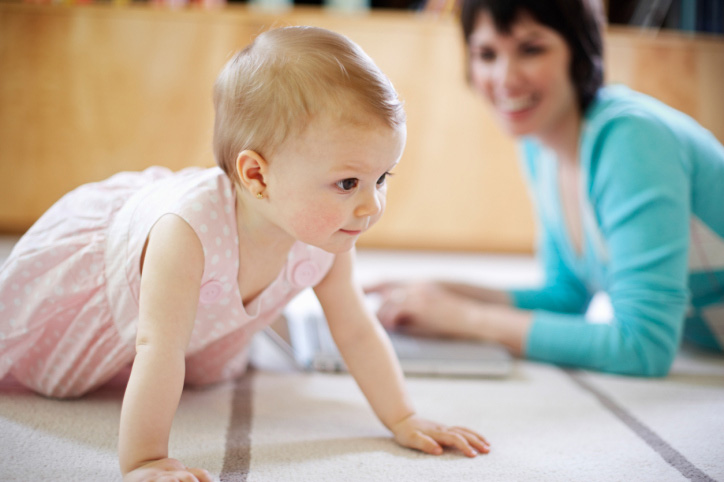Baby-Proof Your Home

Start planning for your baby’s mobility before he or she begins to crawl. Taking time to babyproof your house will help keep your baby and toddlers safe. Remember that no checklist is exhaustive. Contact your pediatrician, family doctor, or local hospital for more ways to help make your home safe for young children.
- First, get down to their level—literally. Both infants who start crawling and toddlers see the world, and your home, from a very different perspective. You will likely not see things that might attract their attention from your higher vantage point.
- Pay special attention to small crawl spaces they might fit into, such as between or behind furniture. Consider blocking that space so they cannot enter it or surveying it to remove any hidden dangers.
- Tie up drapery and blind cords so babies do not get them around their neck, arms, or legs. These cords can quickly become very dangerous and pose a serious strangulation hazard.
- Be on the lookout for sharp edges and corners on furniture and where walls adjoin. As your little one begins to transition from crawling to walking, he or she will likely have a few topples back to the floor. Inspect your home for things they might fall into that could cause serious injury, such as glass-top tables.
- Some houseplants are poisonous. Check with a poison control official if you are not certain about your plants. It’s best to keep houseplants off of the floor and higher on counters children cannot reach.
- Pet food dishes should be removed from the floor when not in use, and make sure your kitty’s litter box is in a safe area where your baby cannot access it.
- Be safe in the tub – Bathtubs require constant monitoring – never let your child (regardless of age) unattended in a bathtub…not even for a minute. Drowning can occur in as little as an inch of water. And, don’t forget to check your hot water temperature. Your water heater should be set at 120 degrees Fahrenheit or lower to prevent scalding.
- Cover electrical outlets – Children might try to put their fingers into the outlets, which could result in electrical shock. It’s best to install safety covers on all outlets your child could potentially reach.
- Use safety gates – Install safety gates to keep your child away from certain areas of your home, such as stairs and outside swimming pool entrances.
- Keep kitchens safe – Toddlers like to reach up for things that are tempting. Cook only on the back burners of your stove so your child cannot reach up and pull a boiling hot pan onto him or her from the front burners. And, if possible, remove stove knobs when not in use.